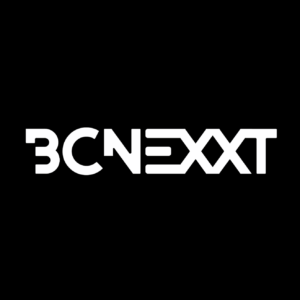IABM carried out an in-depth survey on media companies’ preferred content protection strategies in Q3 2021 on behalf of Axinom, and produced an authoritative, in-depth report on the state of content protection technology based on full or partial responses from 137 content protection technology experts at media companies from around the world.
The survey base covered service/technology providers, OTT platforms and streaming services, broadcasters and Pay-TV operators with subscriber bases ranging from 10k to 10m+, and employee counts ranging from just 1-5 to 500+. On these companies’ monetization models, 45% were SVOD, 34% Hybrid, 12% AVOD and 9% TVOD. Across all these media organizations, the average share of original programming in their content portfolios was around 40%, with larger businesses (serving over 1m subscribers) running higher volumes of original content at around 56%. Most of these businesses predicted an increase in the percentage of original programming they will carry over the next three years, and most expect the cost of that original content to increase significantly – and so too their investment in it.
Content is key – and so is protecting it
Original content is clearly seen as a key element in the ongoing battle to attract and retain viewers. This is illustrated by the finding that the media companies with the smallest percentage (vs their other business costs) of investment in original programming expect to be spending significantly more on original content over the next three years as a proportion of their total costs.
Protecting that investment is a key concern for most media businesses, with 65% saying that Digital Rights Management (DRM) solutions are very or extremely important, with the lion’s share of these being OTT platforms. Currently Fairplay is the most favored DRM technology in use (74%), followed by PlayReady (66%) and Widevine (61%). OMA is preferred by 22% and Marlin 20%. These high percentages point to the next finding – that 44% of companies use multi-key DRM solutions rather than relying on just one technology.
The findings on satisfaction with all these different DRM technologies paints a slightly different picture, with Marlin the most preferred by a considerable margin despite its relatively small user base. Widevine and PlayReady also score reasonably well, FairPlay much less so with OMA significantly further trailing.
Other content protection solutions were also covered in the research, with watermarking currently used by 55% of media businesses, device management/concurrent playback restrictions (the latter mostly DRM-based) by 40%, and scalable key rotation by 32%. On watermarking, most businesses prefer forensic watermarking (51%) while 15% choose visible watermarking and 33% using both types. The preference is for solutions that can identify both whether a pirated video is being originated from their services and track down the source used to steal it.
Fragmentation driving complexity for media companies
In order to paint the broadest picture of the technology choices and problems facing media companies, the survey also asked about encoding, streaming protocols, codecs, and platforms/devices supported.
In terms of encoding providers, 34% of media businesses rely on AWS Elemental, 17% on Bitmovin, 17% on Microsoft Azure and 15% on Harmonic. Most currently support SD, HD and UHD operations and 48% support HDR today, with 33% planning to support it in the short term, – with HDR10 and HDR10+ preferred by the majority (54% and 51% respectively).
In chosen streaming protocols, HLS and MPEG-DASH are most used (78% and 75% respectively), with RTMP and RTSP following (67% and 66%). AVC is by a considerable margin the most preferred video codec (91% of respondents), followed by HEVC at 68%. Interestingly, while MPEG-2 is next on the list at 59%, the number of companies with no plans to use it jumps dramatically compared to AVC and HEVC. Newer codecs VVC and LCEVC unsurprisingly bring up the rear of the list; adoption may increase as they become more established.
The final application data asked for in the survey was on the support of platforms and devices, with browsers and Android and iOS all supported by 84%+ of respondents, followed by Android TV (69%), Apple TV (61%), Smart TVs (58%) and Chromecast (57%). Fire TV, Roku and gaming consoles bring up the rear at around 40% each.
Looking forward
So much for the present state of content protection – but what about the future? The survey asked respondents to look forward – what are the most important content protection trends? Quality of media experience came out as the leader (41%) closely followed by concerns over fragmentation of platforms/devices/standards to support (38%). Coming in at only the 8th and 9th priorities were Security Breaches leading to Content Leakage and Screen Recording – however these were also identified as the number one and fifth priorities for businesses today.
The Covid pandemic has also had a notable impact on content protection trends, with illegal access to media content and content leakage top of the list of trends growing in importance, alongside quality of experience and fragmentation. Screen recording, streaming trial fraud and credentials tampering/sharing occupy places 7-10 on the priority list, but all with a significant reported net impact on businesses.
Geographical differences
Geographically, the report finds that breaches leading to content leakage is most important in Europe and the Americas while interfering with video content and illegal distribution are top of the list in MENA and credentials tampering is the highest priority in APAC and also of concern in the Americas.
Conclusions
Overall, the prioritization of business and consumer trends over pirate-driven ones was consistent across different types of media businesses. However, while pirate-driven trends were ranked as less important, most of them were classified as high priority, with cross-border illegal access to content and security breaches leading to content leakages identified as more important due to the Covid pandemic.
With most businesses predicting their original content investment will increase significantly over the next few years, it seems counter-intuitive that content protection solutions are not a primary business priority given the increase in piracy activity in all its various forms. One of the reasons behind this is the complexity of the advanced content protection landscape, which constantly needs to counter pirate-driven innovation. This means high budgets for content protection and a struggle to keep up with fast-paced developments effectively. In summary, the effects of complexity on technology understanding and pricing are important factors determining media businesses’ deprioritization of content protection technology.
 Figure 1: Content protection trends highlights
Figure 1: Content protection trends highlights
The key to addressing this is moving to flexible content protection technologies, including:
- Technical flexibility – to integrate content protection systems within existing operational settings and naturally leans toward multi-DRM solutions
- Commercial flexibility – to keep in step with industry moves to more flexible payment schemes
- Digital flexibility – eliminating any impact from content protection systems on digital customer experience features, enabling media companies to maintain their primary focus on digital platforms
Most media businesses included in the survey reported that content protection technology models were evolving in these directions, though in some cases are yet to deliver the required across-the-board flexibility. Large media businesses often have departments dedicated to content security, so they possess the necessary resources to keep up with content protection security developments, as well as engaging in behavior-changing initiatives to educate consumers on the consequences of piracy. However, smaller media businesses are less likely to consider content protection technology a business priority because of the lower level of resources they have available to oversee this.
 Figure 2: Driver analysis of content protection investment (Red boxes indicate negative drivers, green indicate positive drivers)
Figure 2: Driver analysis of content protection investment (Red boxes indicate negative drivers, green indicate positive drivers)
Other factors were also cited as deterrents to content protection investment:
- Minor content leakages onto platforms such as YouTube can be leveraged as promotional tools to drive viewers back to the source with a superior quality of service
- Niche content is less attractive to pirates because of its reduced global appeal, so protection is less of an issue
At the other end of the scale, high-profile sports and high-end scripted productions justify a focus on advanced content protection solutions, and this can go beyond just the media company. For example, in sports, collaboration between rights holders and distributors sets minimum standards for content protection, including the adoption of specific technologies such as DRM. As content protection technology models continue to evolve and the complexity decreases, the likelihood of their inclusion in these standards increases.
We mentioned YouTube above; media businesses highlighted that collaborating with them (and other large digital platforms) on issues such as copyright infringement was a business priority – pirates are increasingly resorting to legal internet platforms to help build their illegal distribution networks. Most felt that complete protection may never be possible, but this close collaboration should alleviate content leakage issues and drive viewers back to their own platforms. This also explains why most media businesses identified watermarking as one of their top investment priorities – when a leak is identified, watermarking can help them find and take action against the source quickly.
Looking forward, we see the combination of flexible content protection technology to minimize content leakage/theft at source, working hand-in-hand with watermarking technologies to quickly shut down any bypassing of at-source content protection.









